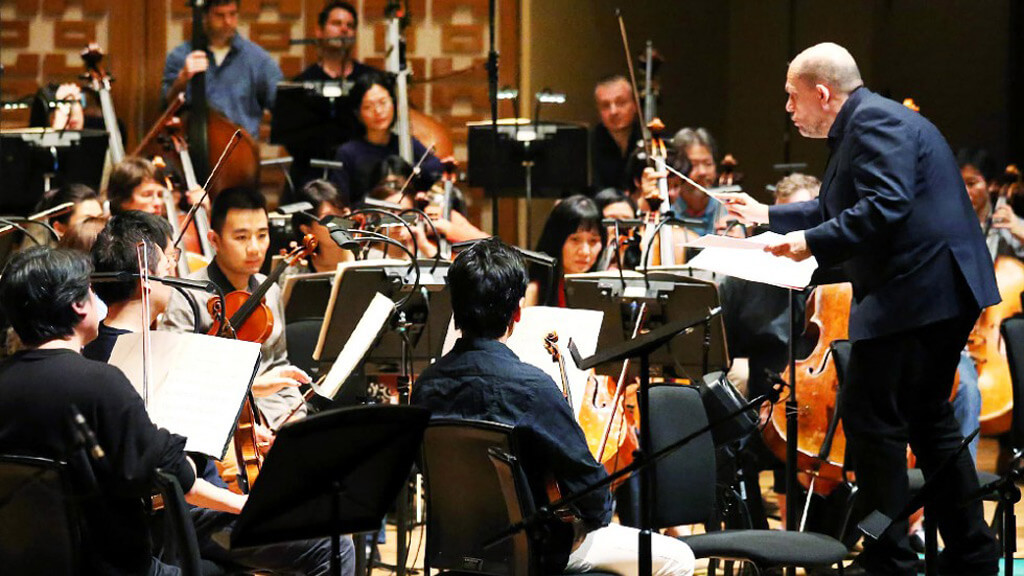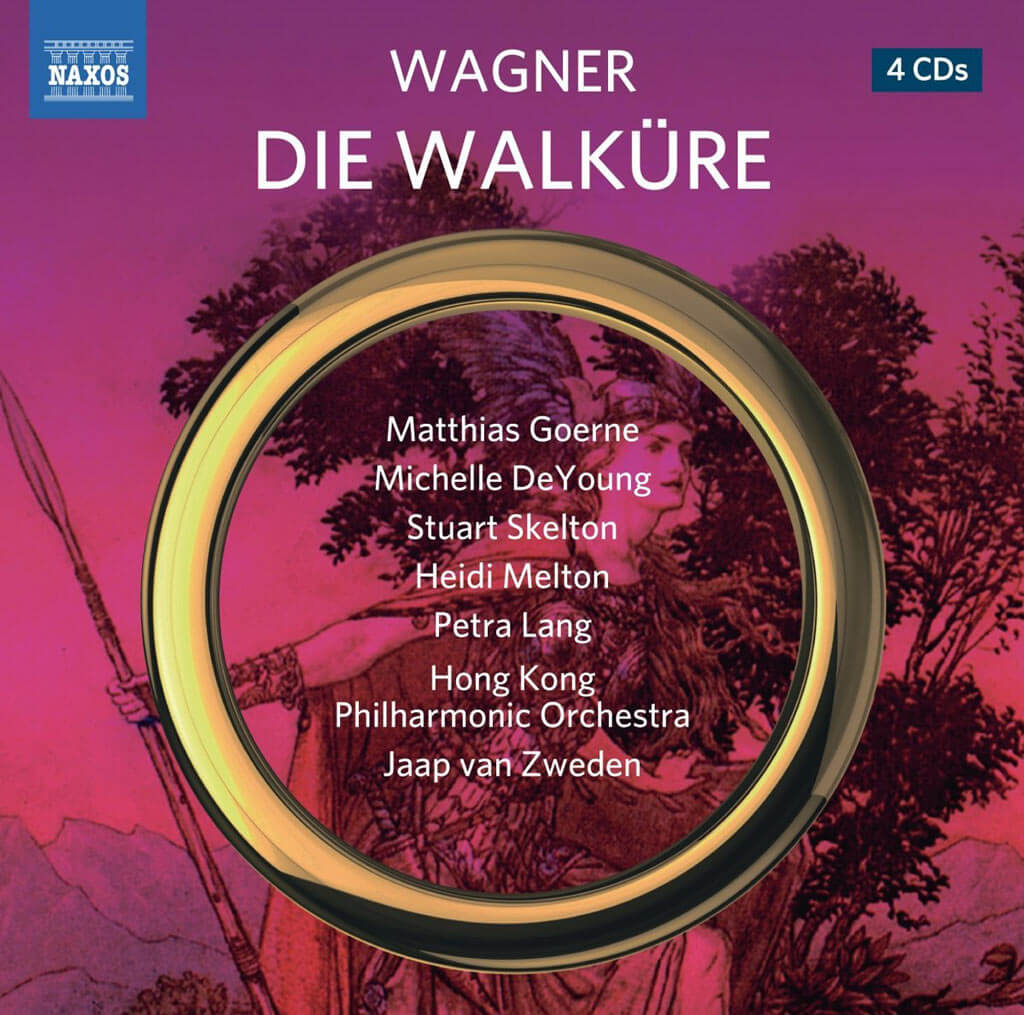
Wagner in general, and the Ring cycle in particular, enjoy the interesting distinction of appealing to enthusiasts of vocal and instrumental music in more or less equal measure. Surely many Wagnerians arrived at an awareness of Die Walküre through the good graces of The Ride of the Valkyries in its compact instrumental version (which I regard as an abomination, even if the composer was eventually prevailed on to authorize it).
Those who incline more to the vocal hemisphere of the Wagner universe will be pleased to know that their hero, conductor Jaap van Zweden, has arrived, along with his trusty confederate Phil Rowlands, producer and engineer of a projected complete Ring based on concert performances by the Hong Kong Philharmonic. To judge by this Walküre, we can expect the Naxos set to be the most voice-forward and orchestra-rearward of stereo Rings. The interesting question is whether it will also rank among the most theatrical.
A case for the affirmative could begin with Wotan’s one-sided dialogue with Brünnhilde in Act 2, a sprawling passage that even some ardent Wagnerians might regard as the price one pays for the confrontational excitement that makes this opera so popular. Famed for his Schubert and no mean Christ in Bach’s St. Matthew Passion, Matthias Goerne presents a mesmerizing portrait of Wotan, as deeply thought-out as it is darkly intoned. All those backstory confessions and ominous forecasts hold interest that could fairly be called Shakespearean. Nor does Wotan’s shout of “Wo ist Brünnhild?” after the Ride lack anything in fatherly fury. Add a touching “Farewell” and I am inclined to rank Goerne a notch higher even than Hans Hotter in the 1965 Solti recording on Decca that remains in many ways the audio gold standard.
No such heresy will be uttered about Petra Lang on Naxos as compared to Birgit Nilsson. There are many moments of strain and variable colour in the higher and louder sequences of Act 3. All the same, this German leading lady (formerly classified as a mezzo-soprano) is a three-dimensional Brünnhilde and her sisters are aptly chosen to create an ensemble that is both diverse and balanced. The American soprano Heidi Melton as Sieglinde sounds at points more Brünnhilde-like than Lang herself; and Melton is indeed appearing as the Valkyrie-in-chief in Hong Kong this month in a Siegfried that will presumably arrive on the shelves sometime before Christmas. I found her Sieglinde in the Canadian Opera Company production of 2015 to be more poised. Still, this is a strong outing.

Another American, tenor Stuart Skelton, is the Siegmund of your dreams: Trumpet-like in the “Walse” shouts but always attuned to the shape of a lyrical line and aware of the import of Wagner’s words. (His vociferous discovery of shelter in Act 1 is the first indication of how prominent voices will be in the Naxos audio landscape.) Mezzo-soprano Michelle DeYoung is a suitably temperamental Fricka. Too often taken to be an old-fashioned scold, this oft-cuckolded character makes Wotan’s dilemma unavoidable because she argues her points so persuasively. As for the German bass Falk Struckmann, if he is a tad approximate as a vocalist, he leaves no doubt of Hunding’s obnoxious nature.
But back to the matter of vocal-instrumental perspective, which requires clarification. In no way does the Hong Kong Philharmonic sound less than excellent or ineptly balanced in its own right. The opening storm is gripping (van Zweden everywhere shows a keen ear for rhythm) and the celebrated Ride will have you prancing in your easy chair (while admiring both the lightning flashes of the strings and the coherence of the brass). Yet the HKP is less in the midst of things than is the Vienna Philharmonic for Solti. We hear the orchestra more as a commentator on the drama than a participant in the narrative. This does not make van Zweden’s work less nuanced, only less overt.
I have restricted myself to a comparison with Solti in the interests of filing this review sometime in 2017. The Rings overseen by Karajan, Böhm, Levine and others have their champions, to say nothing of early efforts by Furtwängler, Keilberth and company. But the Solti set is particularly relevant given the issue last year by Decca of a complete Ring that costs about $50 as a mail-order item and was seen recently at the Atelier Grigorian shop in Toronto retailing for a few dollars less than this new Naxos Die Walküre (which, I should note, lacks a libretto, provided by Decca includes as a DVD extra). Naxos built its name a decade ago or more by underselling the “majors.” My, how times have changed.
For Something More…Video excerpts from the concert performances on which this recording is based are available on YouTube:
For more RECORD KEEPING, see HERE.
#LUDWIGVAN
Want more updates on Toronto-centric classical music news and reviews before anyone else finds out? Follow us on Facebook or Twitter for all the latest.
- SCRUTINY | Moussa Concerto Sounds Strong In Toronto Symphony Orchestra Premiere, Paired With Playful Don Quixote - April 4, 2024
- SCRUTINY | Esprit Orchestra At Koerner Hall: Ligeti 2, Richter No Score - April 1, 2024
- SCRUTINY | Sibelius & New Cello Concerto By Detlev Glanert Offers A Mixed Bag From The TSO - March 28, 2024



